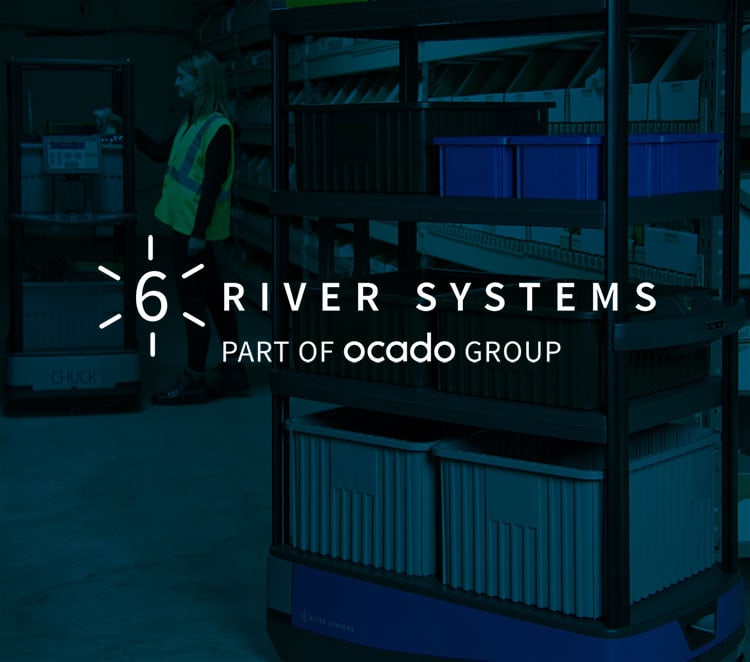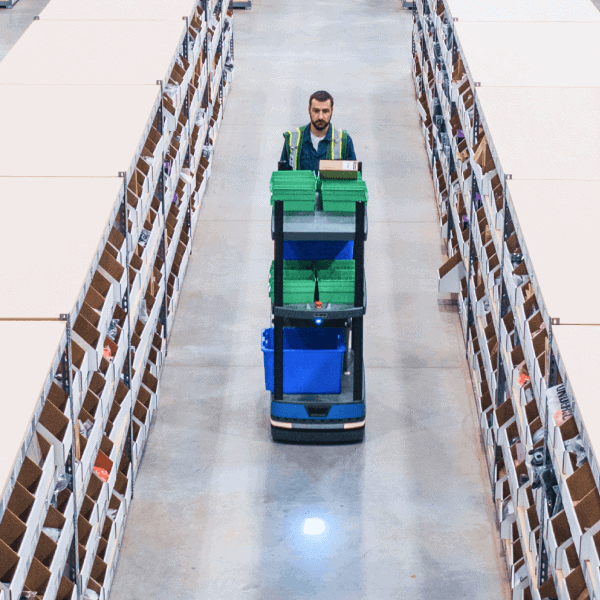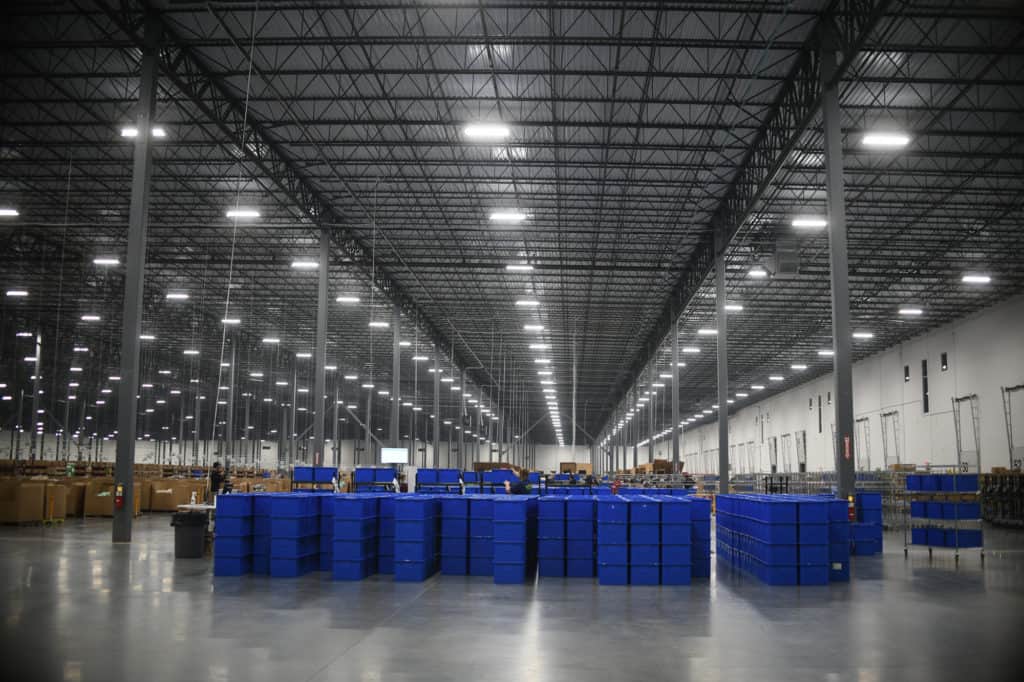Businesses are embracing a slew of modern technologies to stay competitive and increase productivity and efficiency in supply chain operations. Due to their ability to automate tasks that require little or no cognition, robotic order fulfillment has become extremely valuable.
They can be used to efficiently execute any number of picking strategies, transport goods and materials from one point to another and aid replenishment activities. These robots range from articulated arms that automate the fulfillment of high-velocity SKUs to collaborative and autonomous mobile robots that augment the work of humans.
To determine if it’s the right fit for your warehouse/distribution center, let’s take a look at some of the benefits of using robots in order fulfillment operations.
Reduces travel time and improved overall efficiency
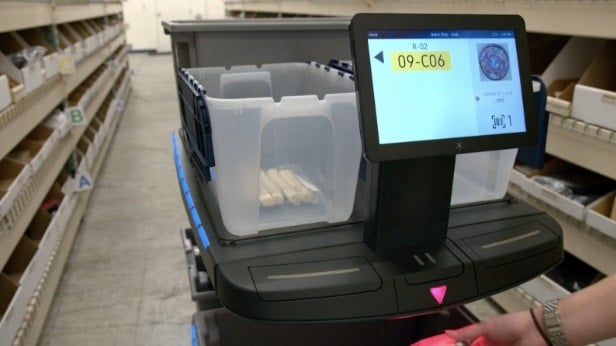
One of the major benefits of robotic order fulfillment is reduced travel time through the facility. The less time human operators spend moving from one end of the warehouse floor to the other, the more time they can dedicate to productive activities that impact customer satisfaction. By automating the travel between picking, robots reduce the length of trips warehouse employees must make to fulfill orders.
The result is less congestion in aisles since fewer workers are moving back and forth through the facility. Some collaborative mobile robots leverage AI and machine learning to optimize pick routes in real-time, thus reducing the overall time spent on order fulfillment.
Reduces strain on warehouse associates
Robotic order fulfillment is an efficient and effective way to handle repetitive manual tasks, as well as those that are risky or physically demanding for human workers. Such activities include transporting heavier loads across the warehouse, retrieving SKUs from high shelves and other potentially dangerous activities. This reduces the physical strain on human operators and creates a safer work environment. Also, there’s less mental stress since workers don’t have to remember the location of items throughout the warehouse or struggle to maintain their own work pace.
Improves flexibility and scalability
Collaborative robots are relatively easy to implement and require no infrastructural changes to your facility, so the initial setup costs are lower compared to the cost of implementing traditional automation solutions like conveyor systems. Because collaborative robots work with your existing infrastructure, it’s easy to transfer robots between facilities as demand fluctuates.
Warehouses can implement a modular deployment system, bringing additional units onboard as the business grows and order fulfillment needs evolve. During periods of high demand, warehouse operators can rent additional units to handle the increased workloads and return them when demand drops off. As such, collaborative robots are ideal for most scenarios, including short-term operations and businesses planning to move to a new facility.
Improves accuracy
Human employees are prone to fatigue, distraction, stress and other effects from physically demanding or repetitive manual tasks. These effects predispose them to make errors that could result in accidents, damaged inventory, shipping wrong or incomplete SKUs to customers, among others. Since computer-controlled systems and robots are not vulnerable to these factors, leveraging them can increase the accuracy of order fulfillment activities.
Due to the impact of consumerization and the Amazon effect, customers have come to expect fast, accurate deliveries and may not repeat purchases from businesses that fail to meet their expectations. As such, robotic order fulfillment can boost customer satisfaction by enabling fast, accurate order fulfillment and timely deliveries.
Reduces labor demands
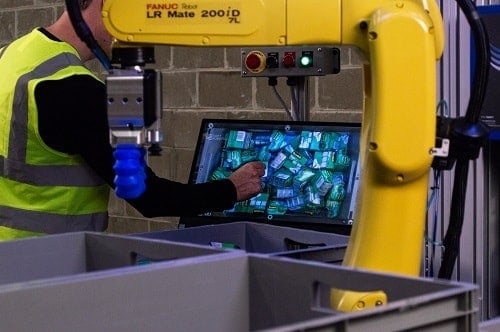
Robots are an attractive option due to an increasingly tight labor market that’s creating more staffing challenges for supply chain and order fulfillment operations. Collaborative robots help to fill the gap caused by staffing challenges by improving productivity and augmenting the work of humans.
They’re also intuitive to operate, reducing onboarding requirements. Modern warehouses leverage collaborative robots and other automated technologies to reduce the time, effort and resources that go into recruiting, hiring and training associates.
Improves productivity
With robots handling all the tedious, repetitive and time-consuming tasks typically associated with order fulfillment, employees are free to focus on quality control and other high-value activities. Robotic order fulfillment can accelerate the execution of routine processes by increasing pick rates and using optimized pick routes. Robots can travel autonomously between picking cycles to eliminate unnecessary travel time, enhancing overall productivity.
Also, robots don’t get tired or take breaks. They can work all day and all night (when necessary) while maintaining long-term precision. That means warehouses can fulfill more orders in less time, thus enabling economies of scale that would not be possible with human workers alone.
Today’s fast-paced e-commerce environment drives businesses to search for more innovative solutions to meet the evolving demands of consumers. Since expedited delivery times plays a critical role in customer satisfaction, savvy businesses are leveraging robotics and advanced automation technologies to drive speed and efficiency in order fulfillment operations.
Download our white paper, 7 Reasons Why Warehouse Robots Beat Traditional Automation, to learn more about collaborative robots that can help you improve picking accuracy and accelerate fulfillment times.
